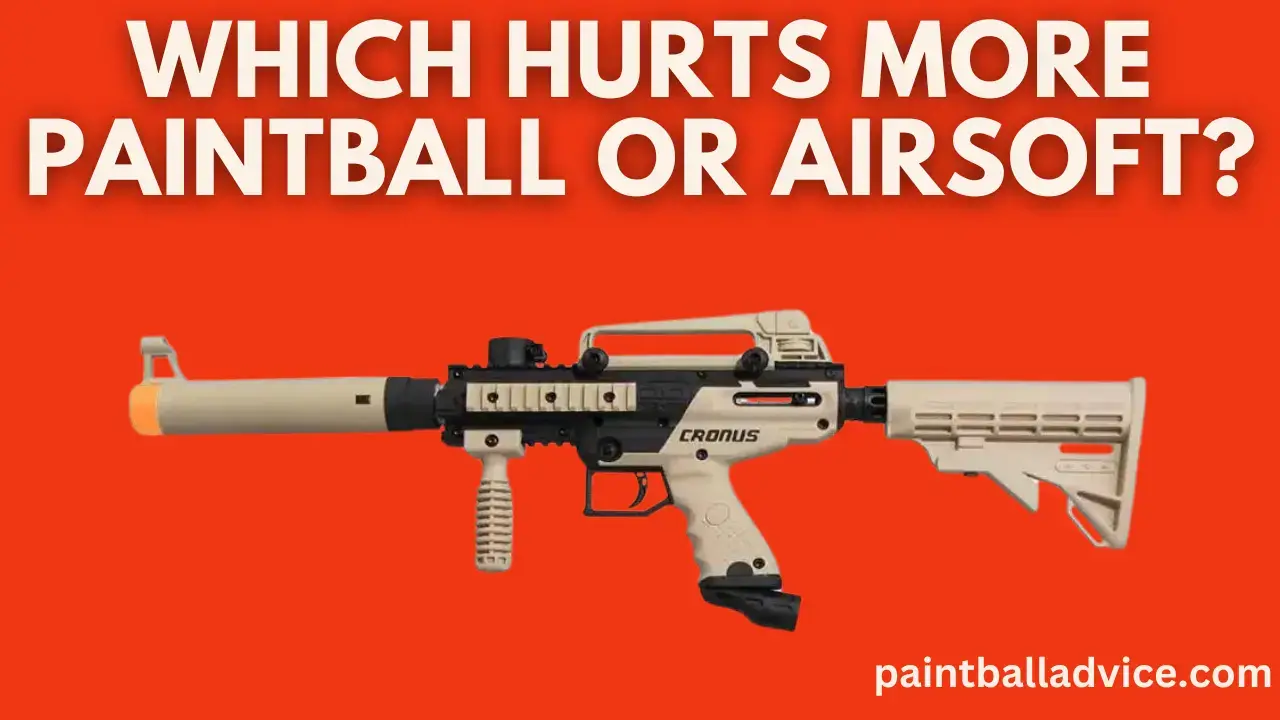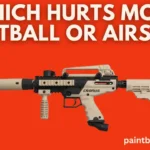The debate between paintball and airsoft enthusiasts over which sport delivers a more painful hit is a perennial one. Both sports involve shooting small projectiles at opponents, but they differ significantly in terms of equipment, gameplay, and the level of realism they offer.
Paintball is known for its colorful splatter upon impact, while airsoft prides itself on military simulation and realistic imitation firearms.
This article delves into the intricacies of both sports, comparing the pain factor, gameplay ethics, and safety measures to determine which of the two might leave you with a bigger sting.
- Key Takeaways
- The Essence of Airsoft and Paintball
- Equipment and Realism
- Safety Measures and Regulations
- Projectile Velocity and Energy
- Physical Sensations Upon Impact
- Protective Gear and Its Role
- The Honor System in Airsoft
- Impact Marking in Paintball
- Dealing with Cheating and Dishonesty
- Skirmish: The Gateway to Airsoft
- Milsim: The Quest for Authenticity
- Other Popular Airsoft Scenarios
- Regulations on Gun Power
- Safety Gear Effectiveness
- The Role of Game Rules in Safety
Key Takeaways
- Airsoft and paintball both involve shooting projectiles in team-based games, but airsoft is more focused on military simulation with realistic imitation firearms.
- Safety is paramount in airsoft, with high-impact rated eye protection being a minimum requirement and power limits on guns to ensure player safety.
- The pain experienced from hits in both sports can vary but is influenced by projectile velocity, the impact area, and whether protective gear is worn.
- Airsoft relies on an honor system where players must self-declare hits due to the lack of visible markings, fostering a culture of honesty and integrity.
- Both sports offer a variety of gameplay types and scenarios, with airsoft featuring skirmishes and military simulations (Milsim) to cater to different preferences.
Understanding the Basics: Airsoft vs. Paintball
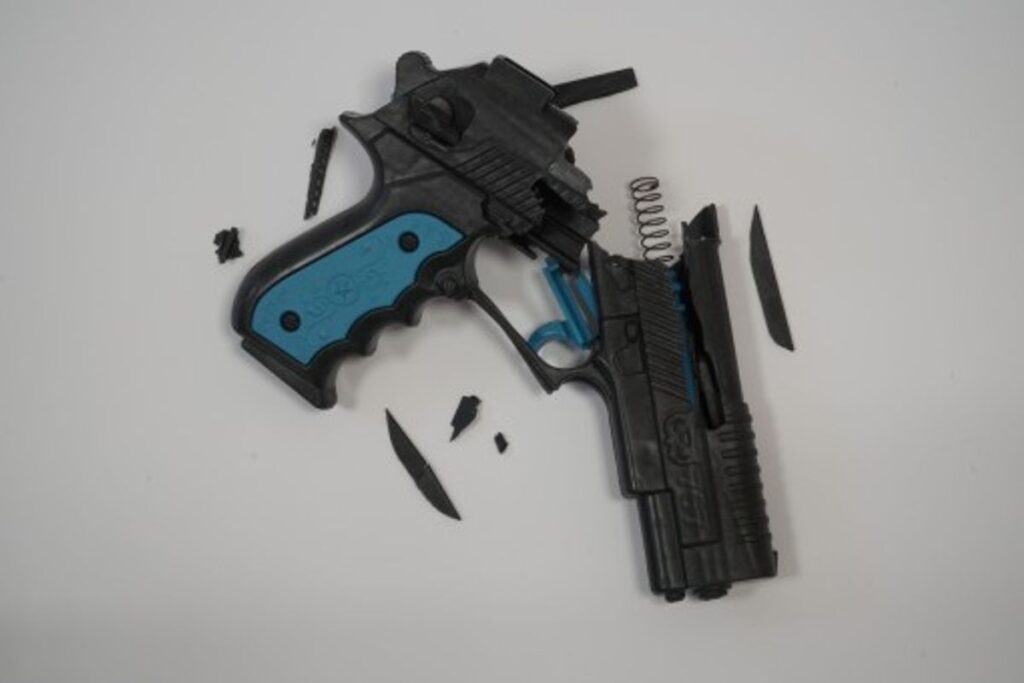
The Essence of Airsoft and Paintball
Airsoft and Paintball are both team-based activities where players shoot projectiles at each other for sport and entertainment. Airsoft is more focused on military simulation, with equipment that closely resembles real firearms, known as Realistic Imitation Firearms (RIFs). Paintball, while also team-oriented, tends to have markers that do not mimic real guns to the same extent.
The first priority in both sports is safety. High-impact rated eye protection is mandatory, and power limits are set for airsoft guns to ensure player safety.
While the essence of both games is similar, the experience and equipment vary significantly. Airsoft players often wear realistic military gear, including vests and helmets, to enhance the simulation aspect. In contrast, paintball gear is typically more colorful and less concerned with mimicking actual combat attire.
Here’s a quick comparison of the two:
- Airsoft: Military simulation, realistic gear, RIFs modeled after genuine firearms.
- Paintball: More casual attire, markers less likely to resemble real guns, vibrant colors.
Equipment and Realism
In the realm of tactical simulations, airsoft takes the lead in equipment realism. Airsoft guns, known as Realistic Imitation Firearms (RIFs), are often near-perfect replicas of actual firearms, both in appearance and handling. This level of detail extends to the players themselves, who frequently don military-style gear, vests, and sometimes helmets to enhance the authenticity of their experience.
The commitment to realism doesn’t end with the gear. Participants often remark on the lifelike feel and performance of airsoft guns, praising their build quality, weight, and the realistic recoil some models offer. The resemblance to real firearms is so striking that it can be difficult to distinguish between the two at a glance.
The pursuit of realism in airsoft is not just about the look of the equipment but also about the feel and functionality, which is often lauded by enthusiasts for its precision and performance.
While airsoft emphasizes authenticity, paintball equipment tends to be less focused on mimicking real-world weapons. Paintball markers, although functional and effective for the sport, do not always share the same level of resemblance to genuine firearms as airsoft RIFs do. This distinction is a key factor in why many choose airsoft for a more immersive and realistic combat simulation experience.
Safety Measures and Regulations
Safety is paramount in both airsoft and paintball, with each sport having its own set of regulations to ensure player protection. Both sports require the use of protective eyewear, which is mandatory to prevent serious eye injuries. Additional safety gear, such as helmets, gloves, and padding, is highly recommended to minimize the risk of bruises and welts.
While the adrenaline of the game can be thrilling, adherence to safety measures is what allows players to enjoy the sports without severe consequences.
Airsoft and paintball fields enforce strict rules to maintain a safe environment. These include guidelines on minimum engagement distances, the prohibition of blind firing, and the requirement for barrel covers outside of the playing area. Here’s a quick overview of common safety regulations:
- Mandatory use of protective eyewear
- Use of barrel covers when not in play
- No physical contact between players
- Regular safety briefings before games
- Chronographing weapons to ensure they are within power limits
Compliance with these rules is not just about personal safety; it’s about respecting fellow players and the integrity of the game.
The Pain Factor: Comparing the Impact
Projectile Velocity and Energy
When comparing the pain factor between paintball and airsoft, it’s crucial to consider the projectile velocity and energy. Airsoft BBs are generally lighter and thus lose kinetic energy faster than paintballs. However, the muzzle velocity of an airsoft gun can be quite high.
The energy transfer upon impact is a key determinant of pain. While airsoft guns may have a high initial velocity, the lighter BBs do not maintain their energy over distance as effectively as the heavier paintballs.
Here’s a quick comparison of the energy levels for different types of guns used in airsoft and paintball:
| Gun Type | Energy Limit (Joules) |
|---|---|
| Airsoft – Semi-Auto | 1.14 |
| Airsoft – Single Shot | 1.68 |
| Airsoft – Bolt Action | 2.3 |
| Paintball Markers | 14-16 |
Paintball markers have a significantly higher energy output compared to airsoft guns. This difference in energy is what contributes to the more intense pain often reported by those hit by a paintball.
Physical Sensations Upon Impact
When it comes to the physical sensations experienced upon impact, both paintball and airsoft have their unique sting. Paintballs, being larger and typically fired at a lower velocity, tend to create a more widespread pain upon impact. In contrast, airsoft BBs are smaller and can be fired at higher velocities, leading to sharper, more localized pain.
The pain experienced can vary greatly depending on the distance of the shot and where on the body one is hit. A close-range shot to exposed skin will undoubtedly be more painful than one that hits a padded area. Here’s a quick comparison of the two:
- Paintball: Larger impact area, potential for bruising.
- Airsoft: Smaller impact area, higher risk of skin penetration.
While both sports involve projectiles that can cause pain, it’s important to remember that the thrill of the game often overshadows the momentary discomfort.
It’s also worth noting that repeated hits in the same area can increase the pain significantly, as the skin and underlying tissues become more sensitive. Safety gear is essential to minimize the risk of injury, but it cannot eliminate the sensation of being hit.
Protective Gear and Its Role
In the realm of projectile sports, protective gear is a critical component that can significantly reduce the pain experienced upon impact. For both airsoft and paintball, the type and quality of protective equipment can make a substantial difference in comfort and safety during gameplay.
When it comes to airsoft, safety glasses or a full-face mask are essential to protect the eyes and face. The UK regulations, for instance, mandate high-impact rated eye protection for all players. Additional gear such as plate carriers or vests can provide further protection and are often available for hire at venues.
Paintball players, especially beginners, are advised to wear full-coverage vests that cushion against impacts, making the initial experience less intimidating. Comfort and comprehensive protection are key factors in choosing the right armor. Moreover, loose-fitting and comfortable clothing is recommended, along with boots to prevent injuries like twisted ankles.
While the sting of a BB or paintball hit can be mitigated with proper gear, it’s the coverage and quality of the equipment that ultimately determines the level of protection and comfort on the field.
Gameplay and Honesty: The Airsoft Ethos
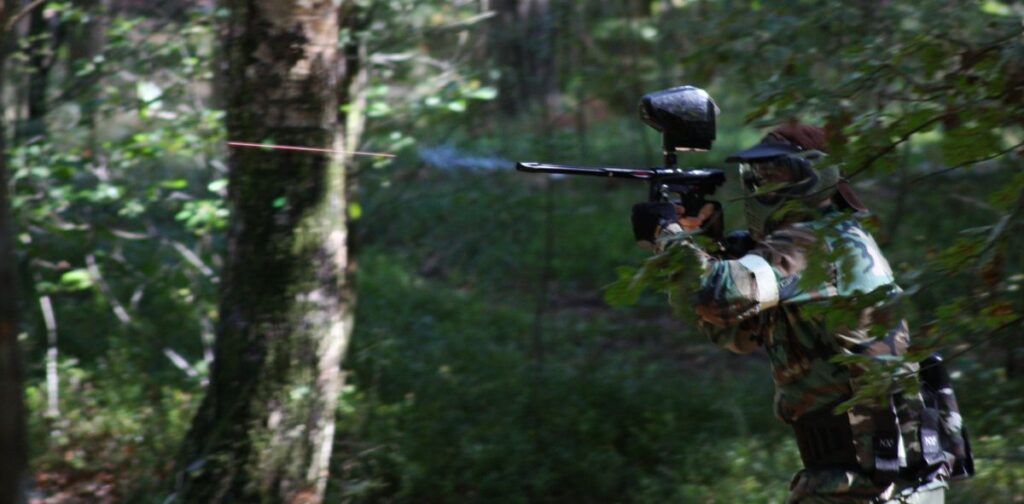
The Honor System in Airsoft
Airsoft is a game deeply rooted in trust and honesty. Unlike paintball, where hits are visibly marked by paint, airsoft relies on the individual to acknowledge when they’ve been hit. This self-regulation is the cornerstone of the sport, fostering a community that values fair play and integrity.
The honor system works because of the mutual respect among players. Cheaters are quickly identified and discouraged, as they undermine the spirit of the game. Here are some basic principles that airsoft players abide by:
- Acknowledge all hits immediately
- Do not ‘overshoot’ or continue to fire at a player who has called their hit
- Dead players do not talk or relay information
- Blind firing is prohibited for safety and fairness
The essence of airsoft is not just in the gameplay, but in the respect and honesty that players show towards each other. It’s a community that self-polices and maintains a high standard of conduct.
While the honor system is generally effective, it’s not foolproof. Instances of dishonesty can occur, but they are the exception rather than the rule. The community’s commitment to honesty ensures that airsoft remains a sport where honor is just as important as tactical skill.
Impact Marking in Paintball
One of the defining features of paintball is the visible mark left upon impact, which serves as undeniable evidence of a hit. This aspect of the game not only adds to the excitement but also plays a crucial role in maintaining fair play. Players can easily identify who has been hit, reducing disputes and enhancing the game’s integrity.
In paintball, the impact marking is not just a means of scoring but also a way to ensure that players cannot deny being hit, which is essential in a sport where honesty is key.
The size and color of the paint mark can vary, but it typically indicates a clear ‘out’ in the game:
- Bright colors for visibility
- Large enough to be seen from a distance
- Water-soluble to ensure easy cleanup
Understanding the impact marking system is vital for both new and experienced players, as it directly influences tactics and gameplay. Players often adjust their strategies to either maximize their chances of marking opponents or minimize their exposure to incoming paintballs.
Dealing with Cheating and Dishonesty
In the world of airsoft, the integrity of the game relies heavily on the honor system. Players are expected to call themselves out when hit, as there are no paint marks to show for it. This system fosters a community of trust, but it’s not without its challenges. Cheating, although rare, can occur and it undermines the spirit of the game.
To mitigate dishonesty, many fields implement specific rules and consequences for those caught cheating. These measures are crucial in maintaining a fair and enjoyable experience for all participants.
Here are some common steps taken to deal with cheating:
- Regular safety briefings emphasizing the importance of honesty
- Clear communication of the consequences of cheating
- Peer monitoring, where players keep an eye on each other
- The use of marshals or referees to enforce rules
- Temporary or permanent bans for repeat offenders
Ultimately, the community’s commitment to fair play is the best defense against cheating. Players who respect the game and their fellow participants help to create a self-regulating environment where dishonesty is discouraged and quickly addressed.
Varieties of Play: Airsoft Game Types
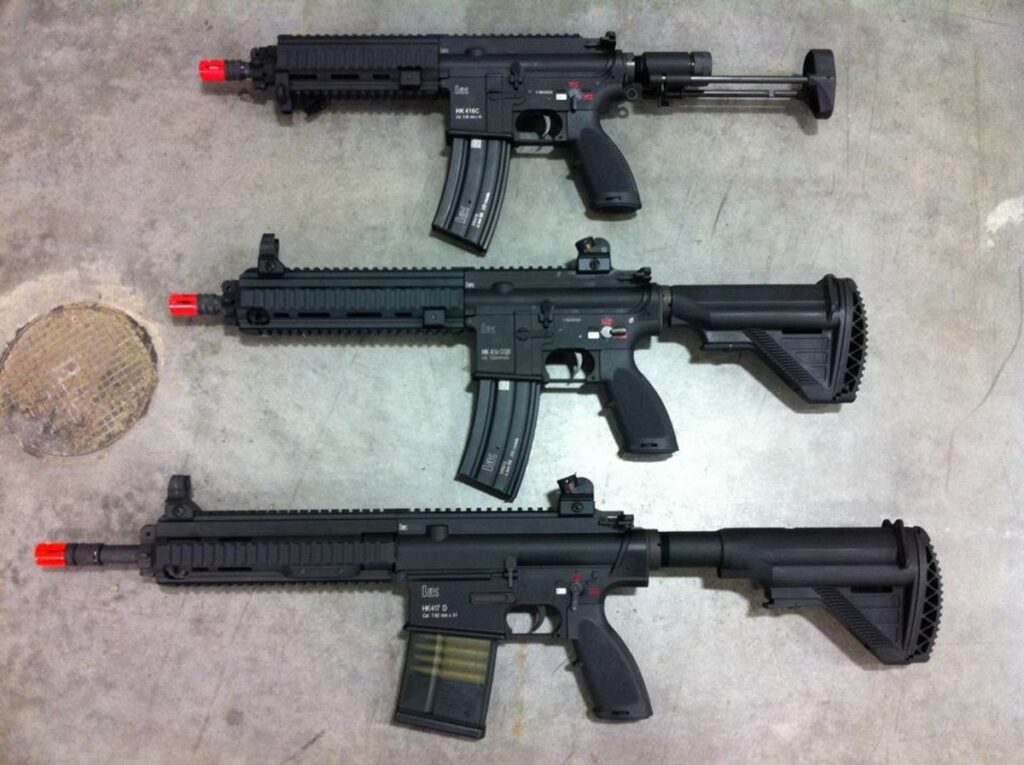
Skirmish: The Gateway to Airsoft
Skirmish games are the most accessible and widely played form of airsoft, offering a straightforward way for newcomers to dive into the sport. These fast-paced battles are akin to the pick-up games of airsoft, where two teams engage in combat scenarios, often with simple objectives like team deathmatch or capture the flag.
While skirmish may lack the complexity of military simulations (Milsim), it provides an excellent platform for players to hone their skills and understand the basics of airsoft. The equipment requirements are generally less stringent, allowing players to participate with minimal investment.
Skirmish airsoft is not to be confused with Speedsoft, which is influenced by paintball and typically takes place in smaller, inflatable arenas. Unlike the more tactical and scenario-driven skirmish, Speedsoft is characterized by its high-speed gameplay and vibrant attire.
For those looking to get started in airsoft, skirmish events are an ideal starting point. They offer a balance of fun and challenge, making them a favorite among both new and experienced players.
Milsim: The Quest for Authenticity
Military Simulation, or Milsim, is the pinnacle of realism in airsoft. Unlike casual skirmishes, Milsim events are characterized by highly organized teams with structured command hierarchies and specific roles. These events can span several days, immersing players in a realistic combat experience.
In Milsim, the equipment used is almost indistinguishable from genuine military gear. Players don realistic imitation firearms (RIFs) and military attire, including vests and helmets, to enhance the authenticity of the simulation. The commitment to realism doesn’t stop at the equipment; the scenarios themselves are crafted to mirror real-world military operations.
While teamwork is valuable in open play, it is essential in Milsim. Objectives are too complex to tackle alone, and players must communicate clearly to coordinate their strategies and achieve their missions.
The dedication to authenticity in Milsim extends beyond the physical aspects of the game. It’s a mindset that demands discipline, strategy, and respect for the simulated environment. For many, it’s not just a game; it’s a tribute to the armed forces and a way to experience the thrill of tactical operations without the real-world risks.
Other Popular Airsoft Scenarios
Beyond the adrenaline-fueled skirmishes and the immersive experience of milsim, airsoft offers a variety of other game scenarios that cater to different play styles and objectives. Capture the Flag and Team Deathmatch are classic examples, often providing a mix of strategic planning and fast-paced action. These scenarios encourage teamwork and quick thinking, as players must adapt to the evolving conditions on the field.
Another engaging scenario is the Bomb Squad Countdown, a game that injects nail-biting suspense into the mix. Teams face off with the task of either planting or defusing a mock explosive device within a set time limit. The pressure of the ticking clock adds an intense layer to the gameplay, demanding precision and coordination from each team member.
Airsoft’s diverse scenarios ensure that players can always find new challenges and ways to enjoy the sport, keeping the gameplay fresh and exciting.
Lastly, airsoft fields often host themed events, such as zombie invasions or espionage missions, which provide a narrative backdrop for the action. These events can transform an ordinary game day into an extraordinary adventure, as players immerse themselves in the storyline and work towards a common goal.
Safety and Performance: Ensuring Fair Play
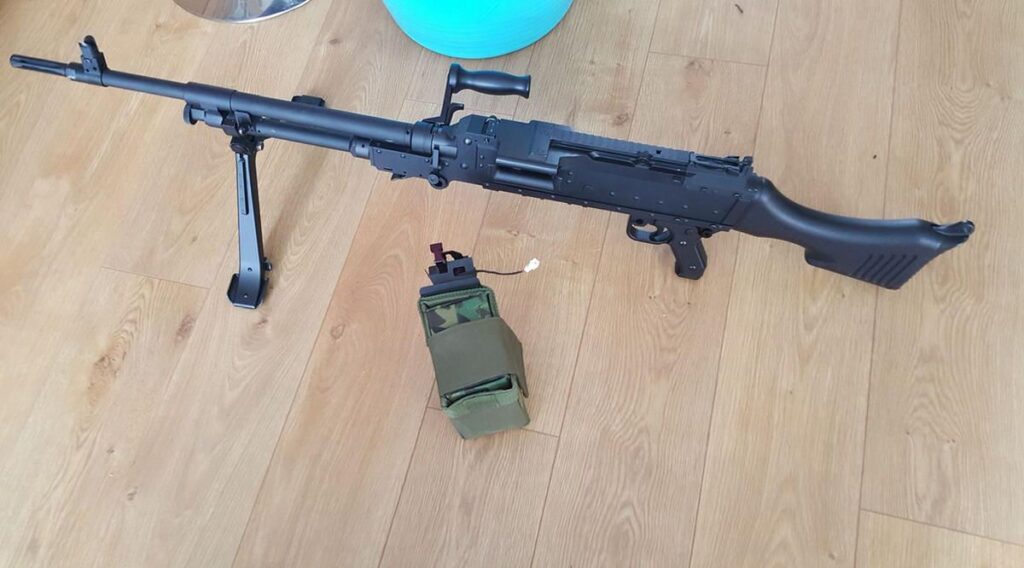
Regulations on Gun Power
In the realm of airsoft, power regulations are not just recommendations but essential rules that ensure safety and fair play. All airsoft guns are subject to power limits, which are strictly enforced to maintain the integrity of the sport. For instance, guns capable of full auto fire are generally restricted to 1.14 joules of energy, while semi-automatic guns have a slightly higher limit of 1.68 joules. High-powered bolt action sniper rifles are permitted up to 2.3 joules. These limits are in stark contrast to paintball markers, which operate at a much higher energy level, typically between 14-16 joules.
The enforcement of power regulations is a critical aspect of airsoft gameplay. Before each game, guns are tested to ensure they comply with the energy limits. Any gun exceeding the allowed power is prohibited from use, maintaining a level playing field and preventing potential injuries.
Here’s a quick overview of the energy limits for different types of airsoft guns:
| Gun Type | Energy Limit (Joules) |
|---|---|
| Full Auto | 1.14 |
| Semi-Auto | 1.68 |
| Bolt Action Sniper Rifles | 2.3 |
While there is no universal law restricting the acquisition or use of airsoft guns, retailers and sports clubs typically impose age restrictions and safety requirements to promote responsible usage.
Safety Gear Effectiveness
When it comes to safety in airsoft and paintball, the effectiveness of safety gear cannot be overstated. Proper gear is essential to prevent injuries and enhance the overall experience. For instance, full-fingered gloves are recommended to protect hands and fingers while allowing for dexterity, a crucial aspect for players to manage their equipment effectively.
Safety gear varies widely, and players often choose based on personal comfort and the level of protection desired. Neck and chest protectors, for example, are not mandatory but provide an additional layer of safety for those who wish to minimize the risk of bruising or more serious injuries.
While the primary function of safety gear is protection, it also plays a role in players’ confidence and performance. Knowing that one is well-protected can lead to a more engaged and assertive play style.
Here’s a quick overview of common safety gear components and their purposes:
- Helmets: Protect the head and often include face shields.
- Goggles: Essential for eye protection.
- Vests: Absorb the impact on the torso.
- Pads: Shield elbows and knees from falls and hits.
- Gloves: Maintain hand dexterity while offering protection.
The Role of Game Rules in Safety
In the realm of airsoft and paintball, game rules are fundamental to ensuring safety and fair play. These rules are meticulously crafted to prevent accidents and promote a culture of integrity among players.
For instance, rules such as ‘dead players don’t talk’ uphold the spirit of the game by preventing eliminated players from influencing ongoing play. Similarly, prohibitions against blind firing are in place to avoid shots being taken without clear sight, which could lead to unsafe conditions.
The enforcement of power limits on airsoft guns is another critical safety measure. In the UK, for example, fully automatic airsoft guns are restricted to 1.14 joules of energy, while semi-automatic guns are capped at 1.68 joules. This ensures that the impact of the projectiles remains within a safe threshold.
- Safety briefings at the start of each game day
- Mandatory high-impact rated eye protection
- Power limitations on airsoft guns
- Prohibition of blind firing
- The honesty policy for hit acknowledgment
The essence of airsoft is rooted in honesty and safety. Without adherence to game rules, the sport would lose its integrity and potentially become hazardous. It is the collective responsibility of all participants to follow these guidelines to maintain the sport’s honorable and secure nature.
Frequently Asked Questions About Which Hurts More Paintball or Airsoft?
What are the main differences between airsoft and paintball?
Airsoft is focused more on military simulation, using realistic imitation firearms (RIFs) that closely resemble real guns, whereas paintball markers often don’t look like real firearms. Airsoft players also tend to wear more realistic military gear for authenticity.
Is airsoft or paintball more painful?
Pain is subjective, but generally, a paintball has more mass and can hurt more upon impact compared to an airsoft BB. However, both sports require protective gear to minimize the pain and prevent injury.
What safety measures are required in airsoft?
Safety is a top priority in airsoft. Players must wear high-impact rated eye protection, and full-face masks are recommended. Airsoft guns are also limited in power, with full auto guns capped at 1.14 joules and single-shot guns at 1.68 joules in the UK.
How do players know if they’ve been hit in airsoft?
Airsoft relies on an honor system where players are expected to call themselves out when hit, as there’s no paint mark to show an impact. Cheating is frowned upon and can lead to being unwelcome in the community.
What types of games can be played in airsoft?
Airsoft offers a variety of game types, including skirmishes (team combat scenarios), military simulation (Milsim), and other scenarios like capture the flag, team deathmatch, and last man standing.
Can airsoft guns be used for self-defense?
While airsoft guns can shoot projectiles at significant velocities, they are not designed for self-defense. They can cause pain but are intended for sport and recreation, not personal protection.
Conclusion
In the debate between the sting of paintball vs airsoft, it’s clear that both sports offer their own unique experiences and levels of intensity.
While airsoft prides itself on military simulation and realistic equipment, paintball brings a more colorful and adrenaline-pumping environment. Safety is paramount in both sports, with strict regulations on equipment power and mandatory protective gear.
Ultimately, the pain experienced may vary based on the equipment used, the distance of impact, and personal pain tolerance.
However, the community’s emphasis on honesty and sportsmanship in airsoft, and the sheer exhilaration of paintball, ensure that regardless of the sting, players return for the camaraderie and thrill of the game.

